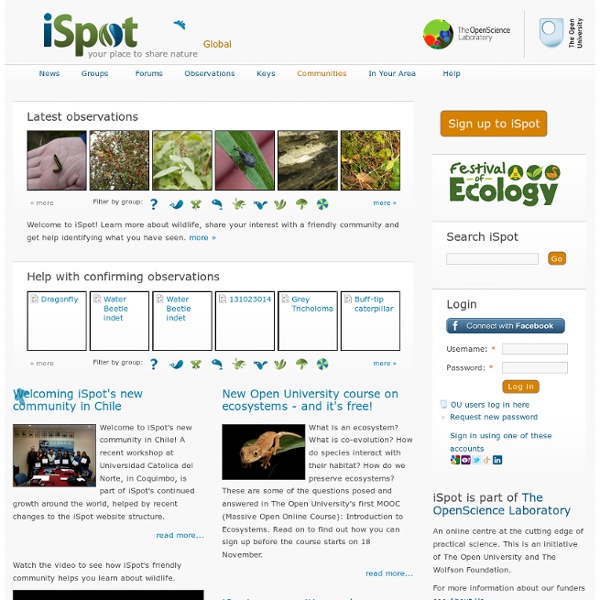



UK BAP The UK Biodiversity Action Plan (UK BAP) was published back in 1994, and was the UK Government’s response to the Convention on Biological Diversity (CBD), which the UK signed up to in 1992 in Rio de Janeiro. The UK was the first country to produce a national biodiversity action plan, and the UK BAP described the biological resources of the UK and provided detailed plans for conservation of these resources. Action plans for the most threatened species and habitats were set out to aid recovery, and national reports, produced every three- to five-years, showed how the UK BAP was contributing to the UK’s progress towards the significant reduction of biodiversity loss called for by the CBD. To support the work of the UK BAP, the UK BAP website was created by JNCC in 2001. The website contained information on the BAP process, hosted all relevant documents, and provided news and relevant updates. 'Conserving Biodiversity – the UK Approach' (2007) Timeline (up to 2012)
Encyclopedia of Earth Volunteers Needed for Massive Smithsonian Digitization Project Today the Smithsonian launches its Transcription Center website to the public. The website is designed to leverage the power of crowds to help the Smithsonian unlock the content inside thousands of digitized images of documents, such as handwritten Civil War journals, personal letters from famous artists, 100-year-old botany specimen labels and examples of early American currency. The Smithsonian has already produced digital images for millions of objects, specimens and documents in its collection. “We are thrilled to invite the public to be our partners in the creation of knowledge to help open our resources for professional and casual researchers to make new discoveries,” said Smithsonian Secretary Wayne Clough. The Smithsonian’s collection is so vast that transcribing its content using its own staff could take decades. Volunteers can register online today to help the Smithsonian transcribe a variety of projects relating to art, history, culture and science, including:
Configuration Error Tree of Life Web Project The Tree of Life Web Project (ToL) is a collaborative effort of biologists and nature enthusiasts from around the world. On more than 10,000 World Wide Web pages, the project provides information about biodiversity, the characteristics of different groups of organisms, and their evolutionary history (phylogeny). Each page contains information about a particular group, e.g., salamanders, segmented worms, phlox flowers, tyrannosaurs, euglenids, Heliconius butterflies, club fungi, or the vampire squid. ToL pages are linked one to another hierarchically, in the form of the evolutionary tree of life. Starting with the root of all Life on Earth and moving out along diverging branches to individual species, the structure of the ToL project thus illustrates the genetic connections between all living things.
Fungi Smithsonian Digital Volunteers ARKive - Discover the world's most endangered species Wildscreen's Arkive project was launched in 2003 and grew to become the world's biggest encyclopaedia of life on Earth. With the help of over 7,000 of the world’s best wildlife filmmakers and photographers, conservationists and scientists, Arkive.org featured multi-media fact-files for more than 16,000 endangered species. Freely accessible to everyone, over half a million people every month, from over 200 countries, used Arkive to learn and discover the wonders of the natural world. Since 2013 Wildscreen was unable to raise sufficient funds from trusts, foundations, corporates and individual donors to support the year-round costs of keeping Arkive online. Therefore, the charity had been using its reserves to keep the project online and was unable to fund any dedicated staff to maintain Arkive, let alone future-proof it, for over half a decade. Therefore, a very hard decision was made to take the www.arkive.org website offline in February 2019.
Science Daily Daily Cup of Yoga — tips, tools, & wisdom on yoga, books, & technology Notes from Nature People have been collecting specimens from the natural world for centuries - minerals, plants, fungi and animals. Today, there are an estimated two billion specimens housed in natural history museums around the world! These biological collections document where species and populations exist now and where they existed decades and centuries before, so they hold irreplaceable information necessary for uncovering the patterns of changes in species distributions and ecosystem composition over time. For the information held in these collections to be used to its full potential there must be better digital access to these data. People and Partners Multiple collections, containing specimens representing over 200 institutions, are currently involved with Notes from Nature. Kip Will, Rosemary Gillespie, Joanie Ball, Meghan Culpepper, Joyce Gross and Peter Oboyski at the University of California at Berkeley, who are key participants in the CalBug project. Notes from Nature and You